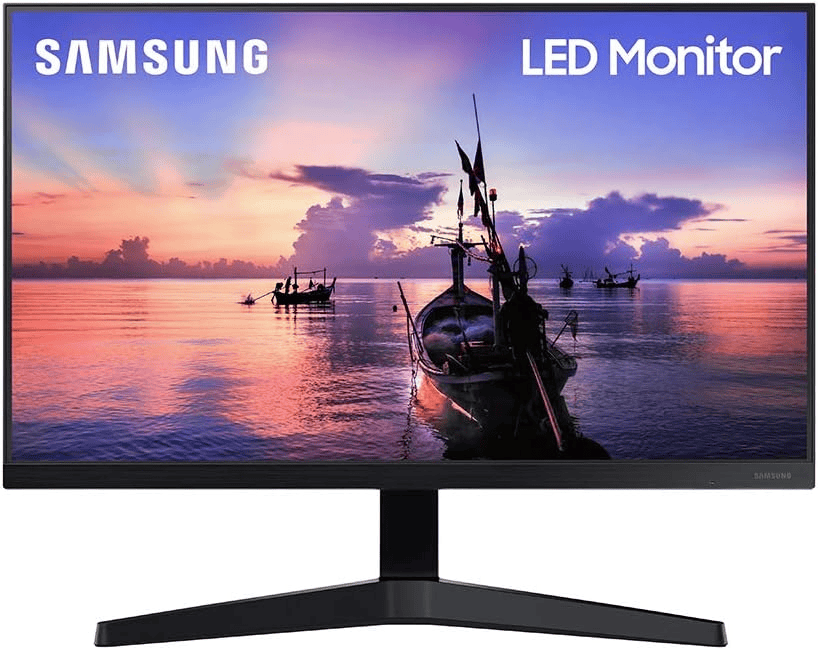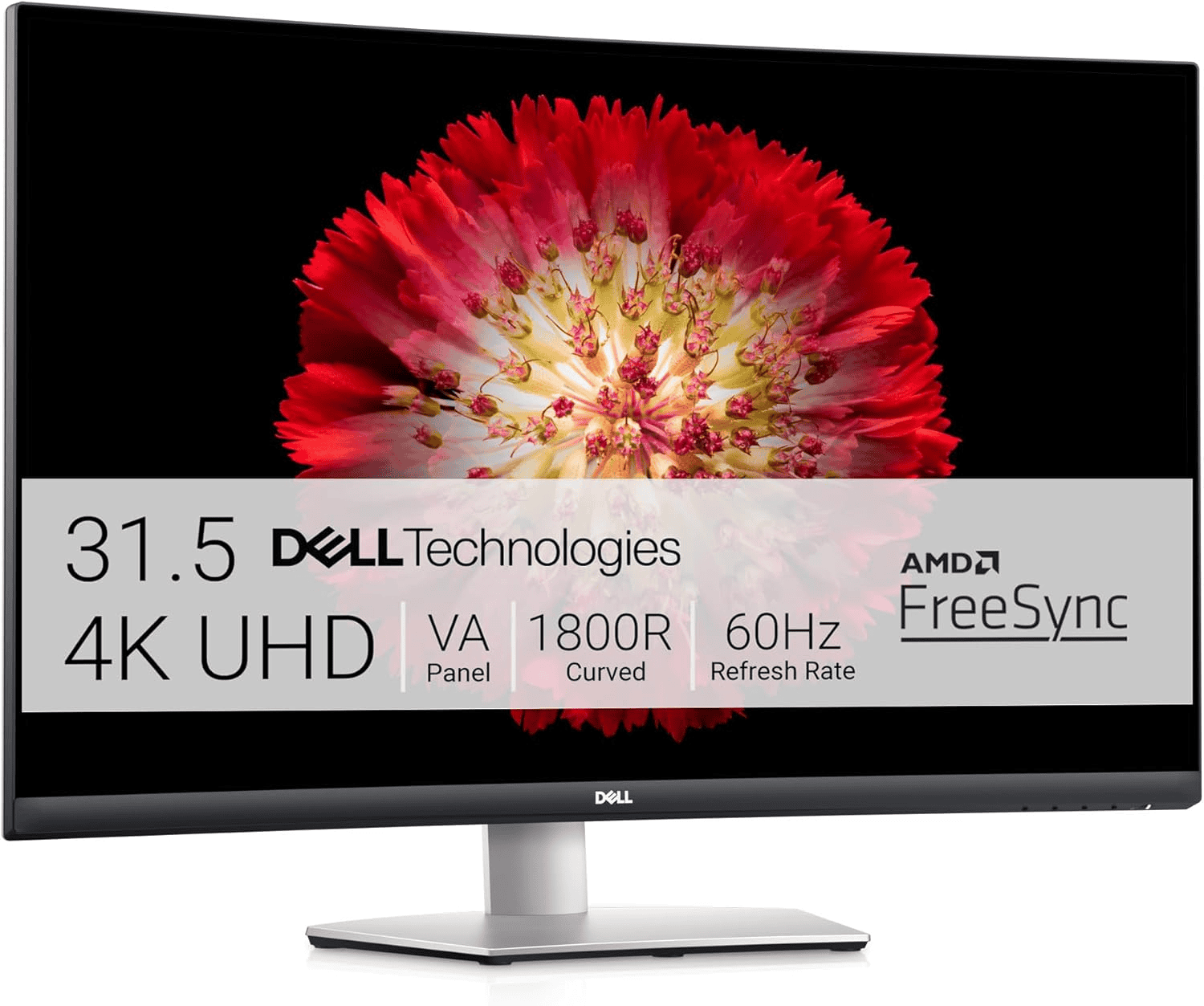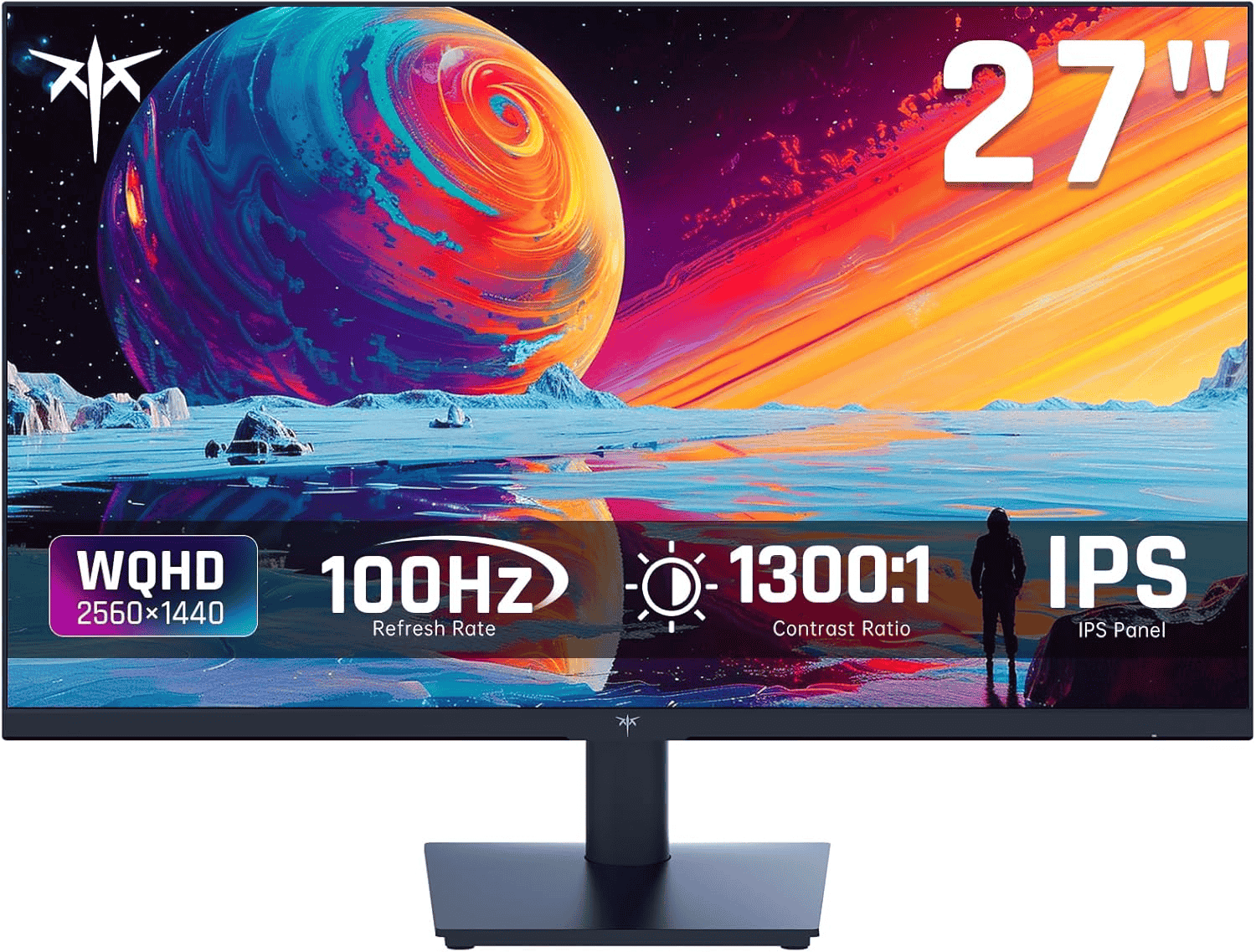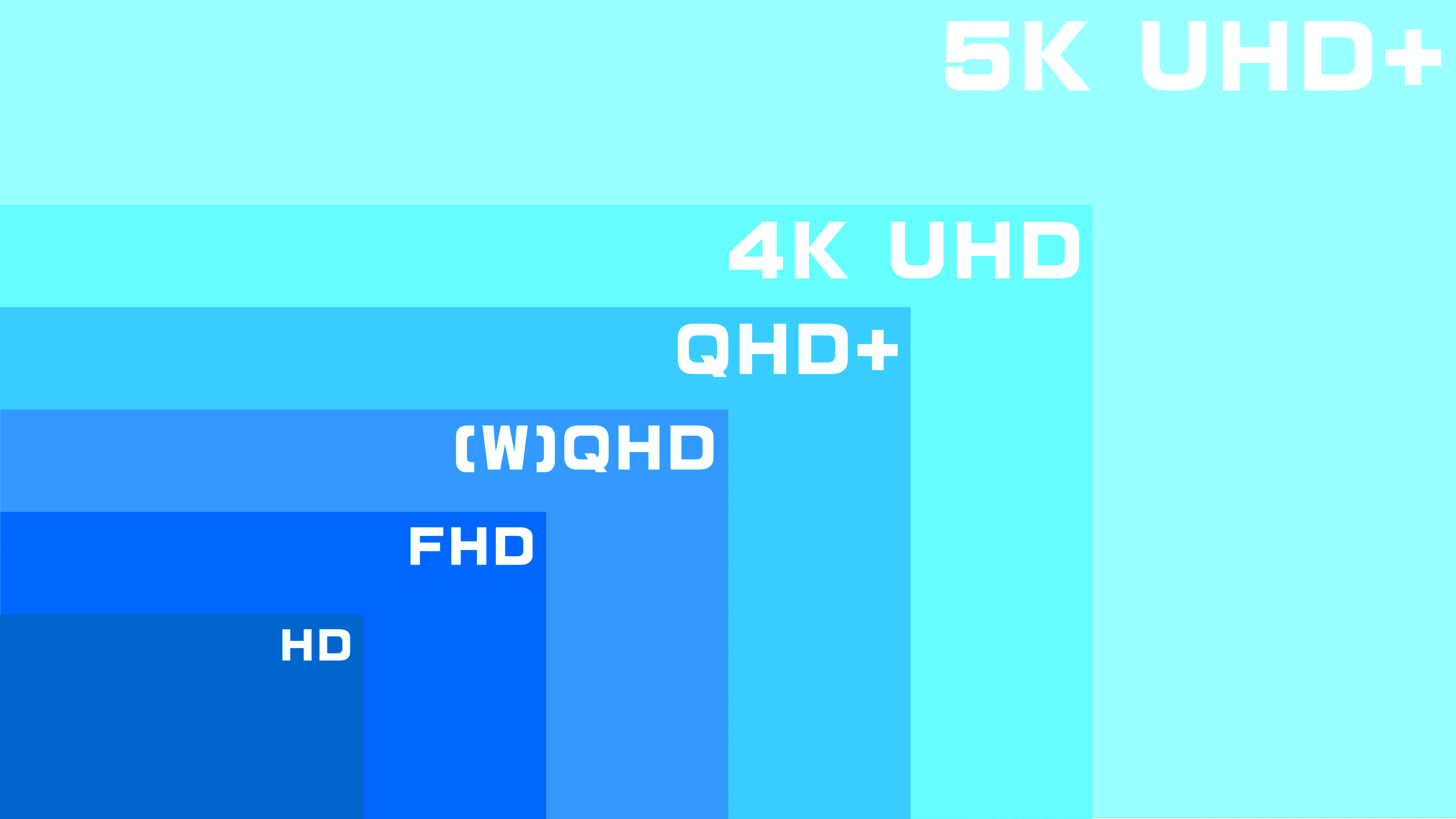Choosing the right screen resolution can greatly enhance your viewing experience, whether you’re watching movies, playing games, or browsing the web. However, with terms like FHD, UHD, and QHD commonly used, it’s easy to feel overwhelmed. This guide clarifies the key differences between these resolutions, outlining their benefits and helping you make an informed decision based on your needs and budget.
We’ll examine pixel counts, picture quality, and ideal use cases for each resolution, ensuring you find the perfect display for your visual enjoyment. Understanding the different screen resolutions is essential when purchasing a display.
- Full HD (FHD): has a resolution of 1920 x 1080 pixels, making it suitable for everyday use.
- Quad HD (QHD): features a resolution of 2560 x 1440 pixels, providing more detail than FHD.
- Ultra High Definition (UHD): also known as 4K, offers a resolution of 3840 x 2160 pixels, delivering the highest level of detail for an immersive visual experience.
These higher-resolution displays are increasingly common, offering sharper images and more screen space for multitasking.
FHD vs UHD vs QHD
Understanding Resolution: Pixels and Picture Quality
When you’re shopping for a new monitor or TV, you’ll often see terms like FHD, UHD, and QHD. These refer to the resolution of the display, which basically means how many tiny dots (called pixels) make up the picture. More pixels mean a sharper, more detailed image. It’s like comparing a standard definition TV to a high-definition one – the difference is clear!
FHD (Full HD): The Standard for Everyday Use

FHD stands for Full High Definition. It has a resolution of 1920 pixels wide by 1080 pixels tall. This is the most common resolution you’ll find on laptops, monitors, and TVs. It offers a good balance of picture quality and affordability. FHD is great for everyday tasks like browsing the web, watching videos, and working on documents.
UHD (Ultra HD): Stepping Up to 4K

UHD, also known as 4K, takes things to the next level. It has a resolution of 3840 x 2160 pixels, which is four times as many pixels as FHD. This means you get incredibly sharp and detailed images. UHD is perfect for those who want the best possible picture quality for movies, games, and creative work. However, keep in mind that you’ll need a powerful computer or gaming console to handle UHD content smoothly.
QHD (Quad HD): A Sweet Spot Between FHD and UHD

QHD, or Quad HD, sits between FHD and UHD. It has a resolution of 2560 x 1440 pixels. This offers a noticeable improvement in sharpness and detail over FHD without the high demands of UHD. QHD is a popular choice for gamers and professionals who want a sharper image without sacrificing performance.
Choosing the Right Resolution: Factors to Consider
The best resolution for you depends on your needs and budget. Here are a few things to think about:
- Screen Size: On smaller screens, the difference between FHD and higher resolutions might not be as noticeable. But on larger screens, the extra pixels really shine.
- Content: If you watch a lot of 4K movies or play graphics-intensive games, UHD is the way to go. But for everyday tasks, FHD is usually sufficient.
- Hardware: Make sure your computer or gaming console can handle the resolution you choose, especially for UHD content.
- Budget: Higher resolutions generally come with a higher price tag.
Resolution Comparison:
| Resolution | Pixels | Benefits |
| FHD (Full HD) | 1920 x 1080 | Good balance of picture quality and affordability, suitable for everyday use |
| UHD (Ultra HD/4K) | 3840 x 2160 | Incredibly sharp and detailed images, ideal for movies, games, and creative work |
| QHD (Quad HD) | 2560 x 1440 | Sharper than FHD, less demanding than UHD, a good choice for gamers and professionals |

FHD, UHD, and QHD Display Resolutions
| Feature | FHD (Full High Definition) | QHD (Quad High Definition) | UHD (Ultra High Definition) |
|---|---|---|---|
| Resolution | 1920 x 1080 pixels | 2560 x 1440 pixels | 3840 x 2160 pixels |
| Pixel Count | Approximately 2 million | Approximately 4 million | Approximately 8 million |
| Pixel Density | Lower than QHD and UHD | Mid-range pixel density | Higher than FHD and QHD |
| Other Names | 1080p | 1440p, 2K | 4K |
| Ideal Uses | Budget-friendly displays, laptops, smaller screens | Great balance between clarity and cost, common for monitors | Highest detail for large monitors, TVs, professional work |
Key Points:
- Resolution: Refers to the number of pixels horizontally and vertically
- Pixel count: More pixels mean a sharper, more detailed image
- Pixel density: Higher is better, especially on smaller screens
- Cost: UHD is generally the most expensive, FHD the cheapest
Which is best?
It depends on:
- Screen size: Larger screens benefit more from higher resolutions.
- Budget: FHD is more affordable.
- Usage: Demanding tasks (graphic design, video editing) favor QHD/UHD.
Key Takeaways
- Screen resolutions, including FHD, QHD, and UHD, are defining factors in the sharpness and clarity of display images.
- Higher resolutions such as UHD provide significantly more detail, enhancing the viewing experience for users.
- The choice of screen resolution affects the overall display performance, suiting different user needs and preferences.
Understanding Screen Resolutions
Screen resolutions are a critical aspect of displays across devices, influencing clarity, detail, and the overall viewing experience.
Resolution Terminology and Standards
Resolution in display technology defines the number of distinct pixels displayed in each dimension. It is represented by the width and height of the pixel count. For example, 1080p, otherwise known as Full HD, has a resolution of 1920 x 1080 pixels. The p in 1080p stands for progressive scan, which means the image is drawn line by line in sequence.
Comparing FHD, QHD, and UHD
FHD (Full HD) presents a resolution of 1920 x 1080 pixels and is widely used in televisions and computer monitors. QHD (Quad High Definition), also known as 1440p, quadruples the resolution of 720p HD, resulting in 2560 x 1440 pixels. UHD (Ultra High Definition), commonly referred to as 4K, contains 3840 x 2160 pixels and significantly enhances image quality.
Impact on Image and Video Quality
Higher resolutions such as QHD and UHD have more pixels, which translates into finer detail and sharper images. With more pixels per inch (ppi), these displays offer increased pixel density, which greatly enhances the sharpness and clarity of the image or video content.
Considerations for Gaming and Entertainment
Resolution is pivotal for gaming and entertainment. Higher resolutions ensure detailed graphics and a more immersive experience. However, they require stronger graphics cards and processors to maintain high frame rates and performance.
Display Technologies and Panel Types
Displays are made with various technologies like LCD, LED, OLED, and QLED. Each type affects color, contrast, and viewing angles. Panel types like IPS, VA, and TN also impact the display’s responsiveness and color reproduction, with IPS panels offering wide color gamut and better viewing angles.
Factors Influencing Monitor Choice
When choosing a monitor, factors such as screen size, aspect ratio, refresh rate, and resolution should be considered. A larger screen with higher resolution offers more workspace and is better for productivity, while gaming may benefit more from higher refresh rates and lower response times.
Connectivity and Compatibility Issues
Monitors connect to devices through HDMI, DisplayPort, and other connectors. It is important to ensure that the device’s output matches the monitor’s capabilities to take full advantage of the resolution. Services like Netflix and Hulu often stream content in high resolution, and compatibility with these resolutions can enhance the viewing experience.
Market Insights and Trends
The evolution of monitor resolutions from Full High Definition (FHD) to Ultra High Definition (UHD) and Quad High Definition (QHD) is shaping consumer preferences and the display technology market.
The Role of High-Resolution Displays in Marketing
High-resolution displays are critical tools in marketing strategies. They grab the attention of consumers and deliver crisp, vivid content that enhances engagement. Brands often use UHD displays to showcase products with stunning clarity, which helps in delivering a compelling visual message and persuade potential buyers.
Advancements in Resolution Technologies
Developments in display technology have led to higher resolution monitors becoming more widespread. Graphics cards now support more powerful outputs, allowing displays to accurately render the detailed imagery required in demanding sectors such as entertainment and media consumption. The growth of AI and monitor technologies is fostering innovations that improve both productivity and the user experience.
Consumer Preferences and Product Ranges
Consumers now have a range of monitor resolutions to choose from:
- Full High Definition (FHD): This is the baseline with a resolution of 1920 x 1080 pixels, widely available and affordable for most users.
- Quad High Definition (QHD): With 2560 x 1440 pixels, QHD monitors strike a balance between high performance and affordability, appealing to users who need better image quality without the price tag of higher resolutions.
- Ultra High Definition (UHD): Also known as 4K, UHD monitors have a resolution of 3840 x 2160 pixels and cater to users looking for the ultimate visual experience in gaming and professional media creation.
As widescreen monitors become more prevalent, consumers are choosing between these resolutions based on their need for heightened detail, workspace productivity, and budget.
Frequently Asked Questions
Different screen resolutions have distinct impacts on gaming, professional use, and everyday computing. Here are some common questions regarding FHD, QHD, and UHD resolutions.
What are the differences between QHD, UHD, and FHD in terms of gaming performance?
FHD (1920 x 1080) is the most common resolution offering good performance and quality. QHD (2560 x 1440) steps up game visuals with more sharpness but demands more from the graphics processor. UHD (3840 x 2160), also known as 4K, provides the highest detail but requires powerful hardware for smooth gaming.
Which resolution should be chosen for a gaming laptop: QHD, FHD, or UHD?
For gaming laptops, FHD is widely chosen due to the balance of performance and battery life. QHD is ideal for gamers wanting sharper images and can afford higher-end hardware. UHD often isn’t recommended for laptops as it significantly drains battery life and requires top-tier components to run smoothly.
What are the visual quality distinctions between FHD, QHD, and UHD?
The visual quality of FHD offers standard sharpness for many purposes. QHD increases clarity and crispness for finer details. UHD tops the chart with the highest level of detail and vividness, making it suitable for large screens where pixel density is paramount.
How do FHD, QHD, and 4K UHD resolutions compare for professional use?
Professionals often choose QHD for the bigger workspace and detail clarity without the extreme performance demands of UHD. Designers and video editors may opt for UHD for maximum detail and workspace. FHD is still a solid choice for general professional tasks that do not require fine detail.
For everyday computer use, which resolution offers the best balance between performance and image quality?
FHD is typically sufficient for daily tasks and is the most cost-effective. QHD strikes a middle ground, offering a visible upgrade in image quality while still being attainable performance-wise for most users.
In what scenarios might one prefer FHD over UHD or QHD?
FHD may be preferred in scenarios where cost and performance are key considerations. It is also suitable for users with less powerful hardware or those who prioritize higher frame rates. Additionally, in smaller screens where UHD might not provide noticeable benefits, FHD is often the practical choice.







